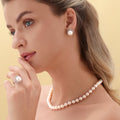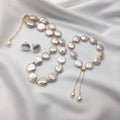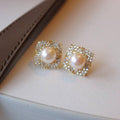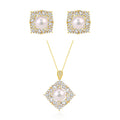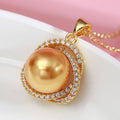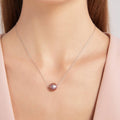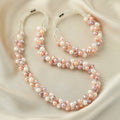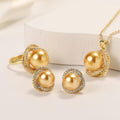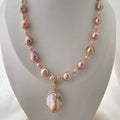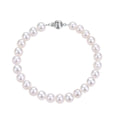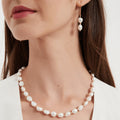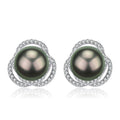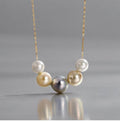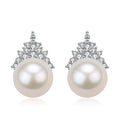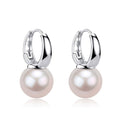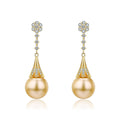Freshwater Pearls
Freshwater Pearls: A Comprehensive Guide to the Versatile Gem of the Pearl World
Introduction to Freshwater Pearls Freshwater pearls are a popular choice for pearl jewelry due to their wide range of shapes, sizes, and colors, as well as their affordability. These pearls are cultivated in freshwater environments, such as lakes, ponds, and rivers, using freshwater mussels. The result is a versatile gemstone that can be incorporated into various jewelry designs, including necklaces, bracelets, earrings, and rings.
Formation and Cultivation of Freshwater Pearls
Freshwater pearls are formed when an irritant, such as a small piece of mantle tissue, is inserted into a freshwater mussel. The mussel secretes layers of nacre around the irritant, eventually forming a pearl. The cultivation process typically takes 2-7 years, with longer cultivation periods often resulting in larger and more lustrous pearls.
Unlike saltwater pearls, which usually produce only one pearl per oyster, freshwater mussels can produce multiple pearls at once. This is because freshwater mussels are nucleated with mantle tissue rather than a bead, allowing for the creation of several pearls simultaneously. This abundance of pearls contributes to the affordability of freshwater pearl jewelry.
Characteristics of Freshwater Pearls
Freshwater pearls are known for their variety of shapes, which can include round, near-round, oval, button, drop, baroque, and even more unique forms. Although round pearls are highly sought after, the diverse shapes of freshwater pearls are valued for their unique charm and appeal.
Colors of freshwater pearls can range from classic white and cream to pink, lavender, and peach, with some pearls displaying a beautiful iridescence known as "orient." The colors of freshwater pearls are determined by various factors, including the mussel species, water quality, and the presence of trace elements.
Freshwater pearls typically have a high luster, which is the result of the thick layers of nacre that form during the cultivation process. The luster of a pearl refers to the way light reflects off the pearl's surface, and a high luster is often associated with higher quality pearls.
Freshwater Pearl Grading
Like other types of pearls, freshwater pearls are graded based on factors such as size, shape, color, luster, and surface quality. The most common grading system for freshwater pearls uses the A-AAAA scale, with AAAA being the highest quality. At House Of Pearls, we offer a selection of high-quality freshwater pearls for you to choose from, ensuring that you find the perfect pearl jewelry for your needs.
Freshwater Pearl Jewelry at House Of Pearls
At House Of Pearls, we offer a stunning collection of freshwater pearl jewelry, including necklaces, bracelets, earrings, and rings. Our jewelry pieces showcase the beauty and versatility of freshwater pearls, making it easy for you to find the perfect piece for yourself or as a gift. Browse our selection to discover unique and timeless freshwater pearl jewelry designs.
Necklaces: Freshwater pearl necklaces come in various lengths and styles, including single and multi-strand options. You can choose from classic white pearls or opt for more colorful options like pink, lavender, or peach pearls.
Bracelets: Freshwater pearl bracelets offer a versatile accessory for any outfit. Choose from simple, elegant single-strand designs or more elaborate multi-strand and charm bracelets.
Earrings: Freshwater pearl earrings are a timeless and elegant addition to any jewelry collection. Choose from classic pearl studs, drop earrings, or more intricate designs featuring additional gemstones.
Rings: Freshwater pearl rings make for a unique and eye-catching accessory. Select from simple solitaire designs or more elaborate settings featuring diamonds or other gemstones.
Caring for Your Freshwater Pearl Jewelry To maintain the beauty of
your freshwater pearl jewelry, it's essential to take proper care of it. Here are some tips to help you keep your pearls in top condition:
-
Avoid exposing your pearls to harsh chemicals: Substances like perfume, hairspray, and household cleaners can damage the pearl's luster. It's best to put on your pearl jewelry after you've applied any cosmetics or perfume.
-
Clean your pearls gently: After wearing your pearls, use a soft, damp cloth to gently wipe them clean. This will remove any dirt or oils that may have accumulated on the surface. For more thorough cleaning, use a mild soap solution and a soft cloth, then rinse and pat dry.
-
Store your pearls separately: Pearls are relatively soft and can be easily scratched by other jewelry. To protect your pearls, store them in a soft pouch or a separate compartment in your jewelry box.
-
Restring pearl necklaces and bracelets regularly: If you wear your freshwater pearl necklaces or bracelets frequently, it's a good idea to have them restrung every couple of years. This will ensure that the silk thread holding the pearls together remains strong and prevents your pearls from being accidentally damaged or lost.
-
Keep your pearls away from extreme temperatures: Extreme heat or cold can cause pearls to crack or discolor. Store your pearls in a cool, dry place away from direct sunlight or other sources of heat.
By following these simple care tips, you can preserve the beauty and value of your freshwater pearl jewelry for years to come.
Conclusion Freshwater pearls offer an affordable and versatile option for pearl jewelry enthusiasts. With their diverse shapes, sizes, and colors, there's a freshwater pearl piece for every style and occasion. At House Of Pearls, we pride ourselves on offering a wide selection of high-quality freshwater pearl jewelry, ensuring that you find the perfect piece to add to your collection or to give as a thoughtful gift. Explore our freshwater pearl jewelry today and discover the timeless elegance of these beautiful gems.
Unparalleled Quality.
Hand-selected and individually inspected pearls ensure our highest quality standards.
Fair & Transparent Pricing.
Jewelry up to 80% below traditional retail prices. Luxury without the markup.
Free Shipping Worldwide.
On orders over $69 USD
Buy Now Pay Later With Klarna.
BECOME A HOUSE MEMBER
Drop your email below and we'll send you members-only discount.



